How to Catch Spawning Smallmouth Bass
In northern parts of the country, early summer is prime spawning smallmouth bass time. It takes a lot of patience to reach this time of year, but its reward is bronze gold. While much of the country is simmering with hot temperatures, northern waters are just getting into the 60’s and smallmouth bass have love on their mind! It is their time to spawn.
If you find yourself in smallmouth territory the next couple of weeks, consider employing the following tips. They will help you have a blast with smallmouth bass.
Seeing Spawning Smallmouth is Believing
It is possible to see bedding bass with electronics, especially with the forward-facing units of today, but it takes a skilled eye. The most reliable way to find them is with your own set of eyes.
There is no substitute for a good pair of polarized sunglasses. These lenses block out horizontal light waves bouncing off the water, thus greatly increasing your vision into the water. Spawning smallmouth bass will bed on any hard structure – dock posts, rock, gravel, logs, tires, brush piles, but they are especially privy to grave and rock.
They will spawn in depths between 1-20 feet deep. In gin-clear waters like the Great Lakes, it is possible to see 20 feet down on calm, sunny days. However, on days not so calm, or water not so clear such as Lake Champlain in Vermont, a flogger will greatly increase your odds.
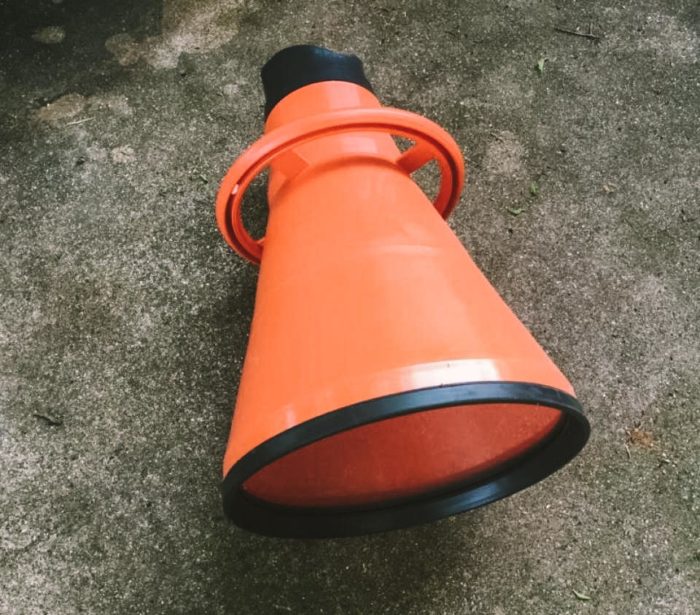
Simply dip the flogger into the water, drift across likely areas, and look down. Once identifying a bed, toss a marker buoy next to it. Then position the boat for optimal casting angles.
Optimal is the ability to see the fish without being so close it is scared off its bed. If the fish remains on the bed while casting to it, it is just a matter of time before it bites.
Drop it on their Head
Smallmouth be dumb. That is politically incorrect. The politically correct way to state that is they are very aggressive at defending their beds. Nearly any bottom bouncing bait will work. Ned Rigs are an exceptional choice. Tubes are another historically effective choice. But it is very difficult to top the drop shot rig.
I use a “machine gun” approach: I do not soak a bait on the bed. Rather, I will cast the lure 10 feet past the bed and drag it on the bed right in the fish’s face. If a drop shot, I will shake the plastic lure in front of its face. Using a pinch weight allows me to adjust the leader. Some spawning smallmouth will hold 2 inches off the bottom, while others will sit as much as 12 inches.
If a different bait, I will hop it right on its head while being very careful not to snag it. The machine gun approach requires only hoping or shaking the bait for 5-10 seconds before reeling it in to repeat. The goal is to make the fish angry by making 5-6 casts per minute. Allowing a lure to sit on the bed may make the bass comfortable.
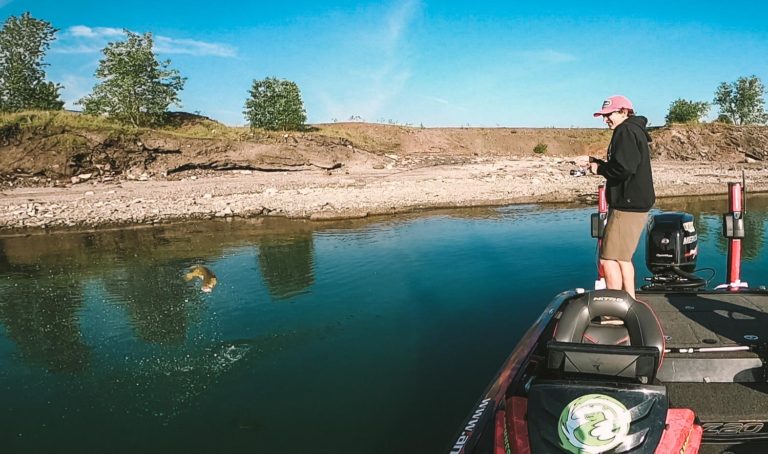
The dumb comment above is reference to a smallmouth’s willingness to bite a lure right after being hooked. If a smallmouth comes unbuttoned before getting in the boat, do not move. It is highly likely it will return to the bed after a few moments and aggressively bite the same lure again. Smallmouth be dumb. And there is not an easier fish to catch than a dumb one!
Tackle Them Spawning Smallmouth Bass!
Spawning smallmouth bass are considered, by many, the strongest pound-for-pound freshwater fish in America. They are acrobatic gymnasts. Yet despite their strength, heavy line and equipment often scares them from biting.

After hundreds of hours targeting bedding smallmouth bass, I’ve found that a combination of braid and fluorocarbon line is best. For all of the presentations above, I will rig a spinning reel with 10-pound braid line and attach an 8-10 feet leader of 8-pound fluorocarbon line with an Alberto Knot. A medium-heavy action spinning rod offers a soft tip to work a bait effectively but has enough backbone to handle the weight and strength of the beast. My rods are custom-made by Yoder’s Custom Fishing Rods.
Have a blast with smallmouth bass this summer! But remember you may be trudging your boat over rocks – it’s best to have a Megaware KeelGuard for protection.

Andrew Buss
Andrew Buss resides with his family in the great state of Indiana. When he’s not fishing, creating YouTube videos or running the Hunter of Fish Bass Circuit, he poses as a school teacher. If you’d like to see more from the #hunteroffish check out his social media channels.
DID YOU ALSO SEE?
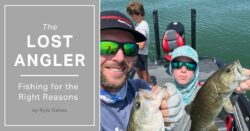
Fishing For The Right Reasons

Fishing as a Co-Angler: Benefits, Challenges, and Techniques
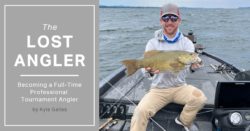

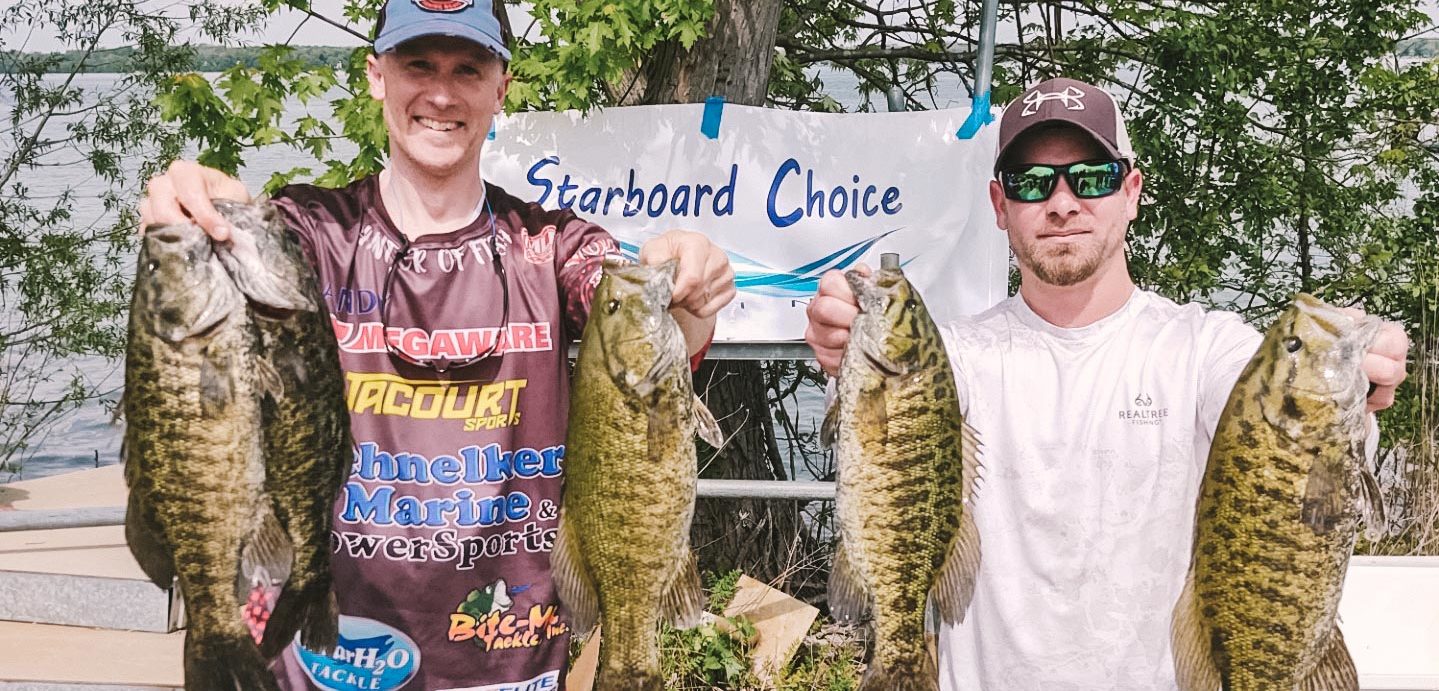
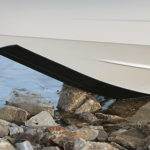
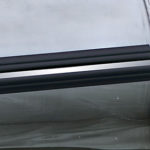
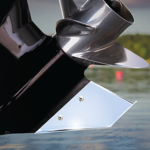

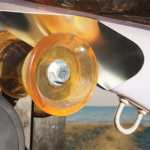
Comments